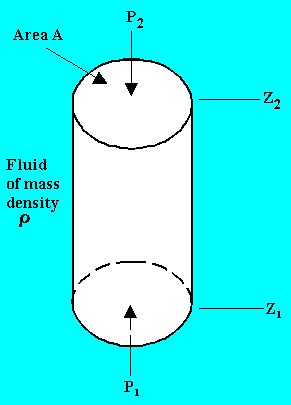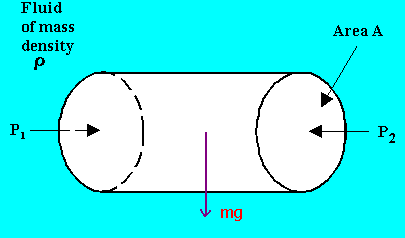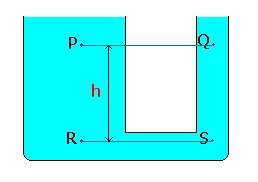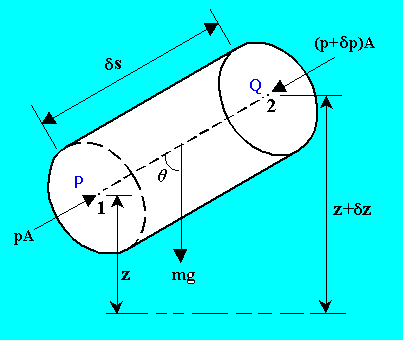Variation of pressure with elevation

Consider a hypothetical differential cylindrical element of fluid of cross sectional area A and height (z2 - z1).
Upward force due to pressure P1 on the element = P1A
Downward force due to pressure P2 on the element = P2A
Force due to weight of the element = mg = \(\rho\)rA(z2 - z1)g
Equating the upward and downward forces,
P1A = P2A + \(\rho\)A(z2 - z1)g
P2 - P1 = - \(\rho\)g(z2 - z1)
Thus in any fluid under gravitational acceleration, pressure decreases, with increasing height z in the upward direction.
Equality of pressure at the same level in a static fluid:

Equating the horizontal forces, P1A = P2A (i.e. some of the horizontal forces must be zero)
Equality of pressure at the same level in a continuous body of fluid:

Pressures at the same level will be equal in a continuous body of fluid, even though there is no direct horizontal path between P and Q provided that P and Q are in the same continuous body of fluid.
We know that, PR = PS
PR = PP + \(\rho\)gh à 1
PS = PQ + \(\rho\)gh à 2
From equn.1 and 2, PP = PQ
General equation for the variation of pressure due to gravity from point to point in a static fluid:

Resolving the forces along the axis PQ,
pA - (p + \(\delta\)p)A - \(\rho\)gA\(\delta\)ds cos(\(\theta\))= 0
\(\delta\)p = - \(\rho\)g\(\delta\)s cos(\(\theta\))
or in differential form,
\[\frac{dp}{ds}\] = - \(\rho\)gcos\(\theta\)
In the vertical z direction, q = 0.
Therefore,
\[\frac{dp}{dz} = -\rho g\]
This equation predicts a pressure decrease in the vertically upwards direction at a rate proportional to the local density.
